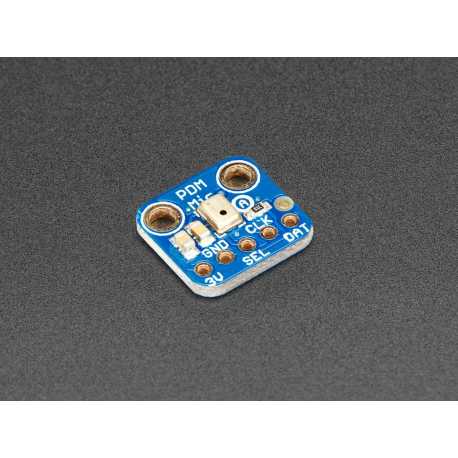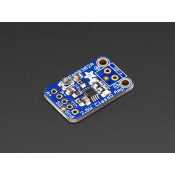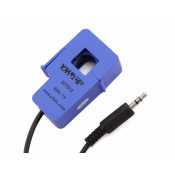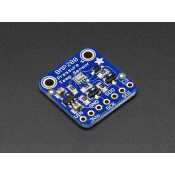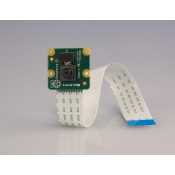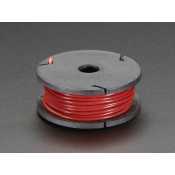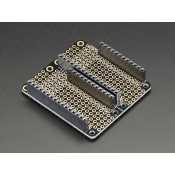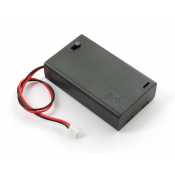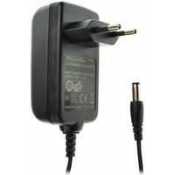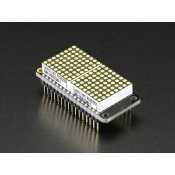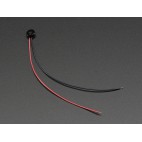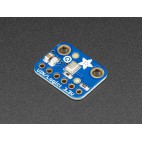Customers who bought this product also bought:
- Mono 2.5W Class D Audio Amplifiers - PAM8302
- Capteur de courant AC non invasif (60A maxi)
- BMP280 - Capteur de pression barometrique - Temperature - Altitude
- Module Camera 8MP V2 for Raspberry PI
- Flexible wire 22AWG red 25 ft spool
- FeatherWing doubling Proto for Feather card
- Block battery with JST connector and ON-OFF inter 3xAAA
- Power supply 9V 830mA 2.1 mm Jack Arduino
- Kit FeatherWing matrix of LED 8 x 16 - white
More info
Description
A new exotic microphone has arrived in the shop, a MEMS PDM microphone! The PDM is the' third' type of microphone that you can integrate with electronics, either analog or I2S. These microphones are very commonly used in products, but are rarely seen in manufacturers' projects. They still have advantages, so we thought about integrating it into the store.
The first thing to note is that this sensor does not provide an "analog" output like many of our electret microphones. It is therefore ideal for microcontrollers that do not have analog inputs. Secondly, the digital interface is a very simplistic pulse density modulation output. It's digital but it's not PWM and it's not I2S. You will need to make sure your chip has a PDM interface - most 32-bit processors today have one!
PDM is a bit like a 1-bit PWM. You time the microphone with a clock frequency of 1 MHz - 3 MHz, and on the data line you will get a square wave that synchronizes with the clock. The data line with logic output 0 or 1, with the square wave creating a density which, once the average is calculated, will give the analog value.
There are several ways to manage these microphones:
- Your microcontroller comes with a hardware device and a library that handles all the data at high speed, collects samples, applies a filter and gives you an analog value (Ideal!).
- Your microcontroller comes with a hardware device that gives you values, and then decimation/filtration is up to you. (We have some sample code for this on the ATSA®21 chipset)
- Your microcontroller does not come with a hardware device but you are pretty smart and find a way to make it work (see this example for ATtiny85)
- You generate the high speed clock, then add an analog filter on the data line, and read the analog value (a hack, but works!).
Whatever way you decide to go, make sure you have an idea of the support you get with your platform, because these chips are a bit tricky!
Whatever way you decide to go, make sure you have an idea of the support you get with your platform, because these chips are a bit tricky!
Each control comes with a fully assembled and tested microphone and a small solder connector for breadboard compatibility.
Features
- Voltage range: 1.8-3.3V
- Clock frequency: 1 - 3.25 MHz
- Current consumption: 0.6mA
- SNR: 61 dB
- Sensitivity: ~-26 dBFS
- Product Dimensions: 14.0 mm x 12.8 mm x 2.8 mm / 0.6 in. x 0.5 in. x 0.1 in.
- Product weight: 0.5g / 0.0oz
Documentation
Accessories
- 5,94 € Add to cart
- 1,14 € Add to cart
- 8,34 € Add to cart
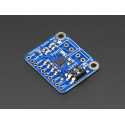
Stereo 2.1W Class D Audio Amplifier - TPA2012
A 2.1W Class D stereo audio amplifier based on TPA2012.
11,94 € Add to cart

